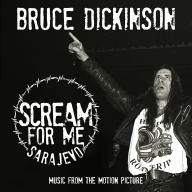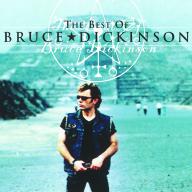Born Paul Dickinson on August 7, 1958, in Worksop, Nottinghamshire, he adopted the first name Bruce as a youngster for reasons unknown. Shortly after relocating to Sheffield as a teenager, Dickinson became enamored of such '70s heavy metal bands as Deep Purple, and after an attempt at becoming a drummer didn't work out, he began singing in local bands -- Styx (not the American band of the same name), Speed, and Shots. But none of these bands broke out of regional status, something that would change when Dickinson fronted his next band, Samson.
During his tenure with Samson, Dickinson went by the name Bruce Bruce. The band issued a pair of albums with Dickinson, including 1980's Head On and 1981's Shock Tactics, and while the bandmembers were part of the aforementioned NWOBHM movement, they failed to gain the popularity obtained by such fellow acts as Def Leppard, Judas Priest, and Iron Maiden. Citing "musical differences," Dickinson left the band in the summer of 1981 shortly after Samson appeared at the summer's Reading Festival.
Almost immediately after his exit from Samson, Iron Maiden's singer Paul Di'Anno left the band despite being in the midst of a meteoritic rise to stardom. A tryout was arranged with Dickinson, who was named Iron Maiden's new vocalist in late 1981. Several months after joining the group, Maiden released The Number of the Beast -- not only one of the best albums of their career, but an undisputed all-time heavy metal classic. With his powerful operatic vocals, the new Dickinson-led Maiden stormed the charts and arenas worldwide for the remainder of the decade -- solidifying their standing with such further acclaimed releases as 1983's Piece of Mind, 1984's Powerslave, 1985's Live After Death, 1986's Somewhere in Time, and 1988's Seventh Son of a Seventh Son.
Despite Maiden's massive success, rumors always circulated about Dickinson often butting heads with Maiden founder/bassist Steve Harris, and the release of Dickinson's first ever solo album in 1990, Tattooed Millionaire, only intensified the speculation. But Dickinson returned to Maiden shortly thereafter, lending his vocal talents to 1990's No Prayer for the Dying and 1992's Fear of the Dark. While the band remained extremely popular in just about every area of the world, Maiden began losing its footing stateside, and sensing that the band's best days were behind them, Dickinson left the group in 1993 after a farewell tour (several Dickinson-era live albums were issued by Iron Maiden around the same time -- A Real Live One, A Real Dead One, and Live at Donnington 1992).
Maiden would soldier on with replacement vocalist Blaze Bayley (formerly of Wolfsbane), while Dickinson resumed his solo career, resulting in 1994's Balls to Picasso, 1995's Alive in Studio A, 1997's Accident of Birth, 1998's The Chemical Wedding, and 2005's Tyranny of Souls. But like Bayley-era Maiden, Dickinson's solo career failed to reach as wide of an audience as '80s Maiden had. Dickinson and Maiden patched up their differences by the late '90s, as he rejoined the group for a successful reunion tour in 1999, and a year later, for the album Brave New World and supporting tour.
While Maiden was once again his top priority -- subsequent albums like Brave New World, Dance of Death, Final Frontier, and The Book of Souls continued to result in packed arenas -- Dickinson continued to focus on his solo career, with the compilation The Best of Bruce Dickinson arriving in 2001, followed by the full-length studio album Tyranny of Souls in 2005 -- BMG reissued all five of Dickinson's solo efforts on vinyl in 2017. In 2018 Dickinson released the concert film Scream for Me Sarajevo, which chronicled a 1994 solo concert that took place while the Bosnian War was still raging and Sarajevo itself was under siege. ~ Greg Prato, Rovi











